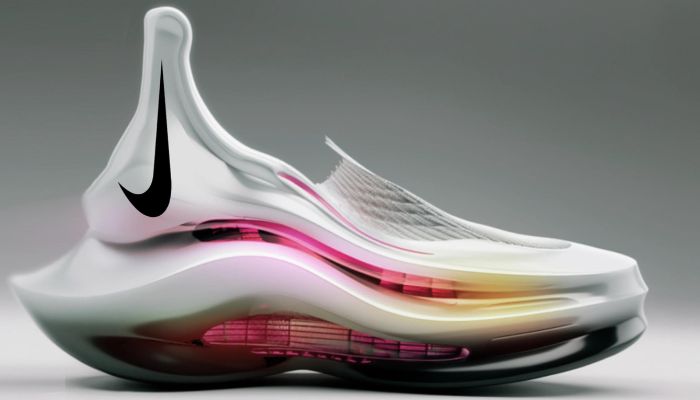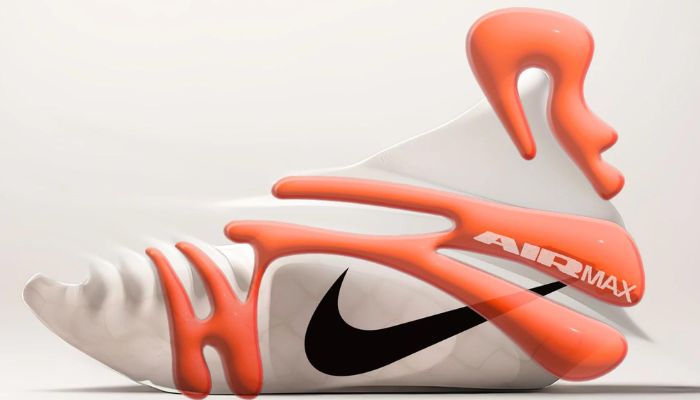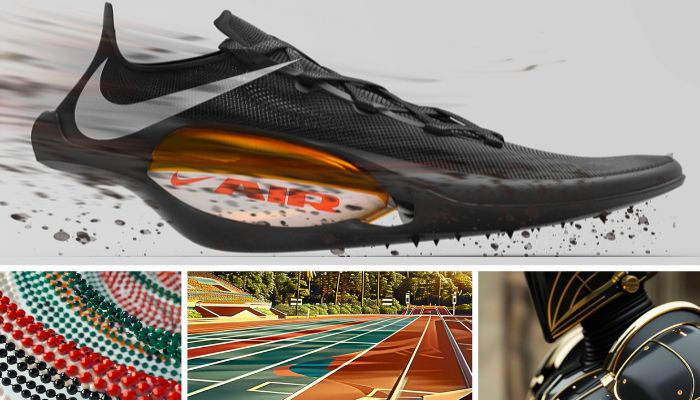Nike A.I.R. Revolutionizes Footwear With AI and 3D Printing

Consider a shoe that reflects the diverse personalities of individuals. Whether you’re a bookworm, a connoisseur of luxury timepieces, or a fan of fantasy movies, what would such a shoe entail? Nike pursued this vision with its Nike A.I.R. project, aiming to integrate the unique styles and athletic needs of 13 sponsored top athletes into individual shoe designs. Achieving this goal relied on Nike’s design teams, athlete input, and advanced technological tools. Utilizing algorithms, artificial intelligence, and 3D printing, Nike developed prototypes for each athlete’s distinctive shoe. These innovative creations were showcased at the Nike On Air event on April 11 at the Palais Brongniart in Paris.
Building upon the iconic Nike Air, a symbol of continual innovation within the brand, Nike A.I.R. takes the concept even further. The renowned sporting goods manufacturer boldly claims to be crafting its most audacious shoe designs yet. Through a fusion of AI technology, 3D printing, design, and craftsmanship, the brand melds cutting-edge methods with established practices to encapsulate not just the current zeitgeist, but the spirit of the future. A.I.R. not only represents the Air-based prototypes but also serves as an acronym for Athletes Imagined Revolution, underscoring the brand’s commitment to pushing boundaries and reimagining athletic footwear.

The shoe of basketball player A’ja Wilson.
In fact, Nike A.I.R is probably the brand’s most intensive collaboration with its athletes, who were involved in every step of the design process to create a reflection of their personality in the form of a shoe. The 13 prototypes are co-creations between Nike and Olympic and Paralympic athletes from running, tennis, basketball and soccer.
Crafting 13 Unique Creations with AI and 3D Printing
In the initial phase of the process, Nike conducted extensive interviews with its athletes to delve into their vision of the perfect shoe. The athletes provided feedback on design preferences, customization options, and shared insights into their personalities, playing or running styles, as well as pivotal life experiences. These wide-ranging answers were summarized by an AI into a global idea, and this AI created hundreds of different images for each athlete. The Nike designers used these algorithm-generated images as a source of inspiration for their first designs and presented them to the athletes.
Subsequently, each athlete and sports personality offered their individual insights. For instance, marathon runner Eliud Kipchoge highlighted potential performance concerns with the initial model, prompting adjustments for optimization. Similarly, other athletes provided feedback on enhancing the aesthetics, functionality, and personal expression of the initial prototypes. For example, tennis player Zheng Qinwen’s shoe, shaped like a snake, not only symbolizes the Chinese lunar calendar’s Year of the Dragon but also reflects her Chinese heritage.
The feedback provided by the athletes proved invaluable to the Nike design team, highlighting potential flaws in some of the AI-generated designs that might not have withstood the rigors of sports. Crafting the final prototypes for the 13 athletes involved a blend of 3D sketching, computer design, hand drawings, and 3D printing. This hybrid approach significantly expedited the production process for Nike. While traditional methods could have taken weeks to months, the final prototypes were completed within a matter of hours to a few days at most. Nike’s Concept Creation Center, equipped with rapid 3D printers, played a pivotal role in this accelerated timeline, alongside the integration of artificial intelligence.

Tennis player Zheng Qinwen’s shoe pays homage to her cultural heritage.
“AI exponentially increases our creative process,” says Roger Chen, Nike VP, NXT, Digital Product Creation. “Creating these starting points used to take us months to do. Now, we can create them in seconds. We liken AI to a sharper, more intelligent pencil. The designer is still in control. It’s what you do with the pencil that creates the magic. We gave these generative programs entire worlds to reflect back to us, and they did that. But that doesn’t happen without the thorough listening sessions our teams conducted with our athletes.”
With A.I.R., Nike wants to provide athletes with high-performance equipment that reflects their personality and supports them in their quest for the best time or top performance. At the same time, the brand is looking further into the future and is not limiting its approach of fully individualized shoes to the 2024 Olympic Games in Paris. The 13 prototypes are an inspiration for the brand to explore what the footwear of the future could look like, integrating performance and personality.
“For these prototypes to be successful, they must stir emotions,” John Hoke explained, Nike’s Chief Innovation Officer. “They must evoke a sense of awe for what lies just beyond the horizon, an optimism for the future. What I really hope this project stirs up is a sense of unlimited potential. Nike Air is a nearly 50-year-young technology. We’re only at the cusp of harnessing Air’s potential, its full expression. And these footwear prototypes show we’re nowhere near done.” To find out more about the Nike A.I.R. project, click here.

Concept for Kenyan runner Faith Kipyegon and some of the AI results.
What do you think of Nike A.I.R.? Let us know in a comment below or on our LinkedIn, Facebook, and Twitter pages! Don’t forget to sign up for our free weekly newsletter here for the latest 3D printing news straight to your inbox! You can also find all our videos on our YouTube channel.
*All Photo Credits: Nike






